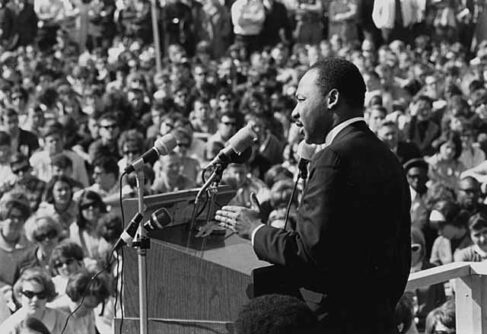Dickens’s novels have two outstanding themes on philanthropy, both of which are very congenial to conservatives. These themes help to explain why—contrary to what one might expect, given Dickens’ critique of the “1%” of his day—Dickens is more popular today among conservatives than among liberals.
First, Dickens suggests that philanthropists do best when they help their neighbors and local community. Dickens shines an approving light on kindnesses to those near-at-hand, although he does not fail to show up the Mrs. Pardiggles of the world whose officious “good works” to the local poor do nothing to help them. Dickens’ most effective philanthropists are those who take in children to whom they have some connection, such as the wealthy Mr. John Jarndyce taking in the Jarndyce wards in Bleak House or poor Mrs. Betty Higden in Our Mutual Friend taking in little Johnny. Meanwhile, Dickens criticizes those who neglect neighbors and family in favor of those far away. He carries out this critique most famously in his derisive treatment of Mrs. Jellyby’s “telescopic philanthropy” to aid distant Africans, a philanthropy which is carried out while Mrs. Jellyby so far neglects her own family that she fails to hear her young son fall down the stairwell. Dickens’s praise for local over telescopic philanthropy is congenial to conservatives because, as William Schambra wrote in this space last week, conservatives are drawn to local solutions and local philanthropy while liberals tend to promote large-scale solutions to global problems.
Second, Dickens’s novels suggest that it’s not wealth (or poverty) that corrupts the soul, but a bitter dissatisfaction with one’s lot in life. Dickens presents many well-to-do villains such as Mr. Bounderby of Hard Times. However, he also presents many wealthy men quite favorably: for example, both Mr. Jarndyce of Bleak House as well as John Harmon of Our Mutual Friend are favorably depicted as employing their inherited wealth for benevolent purposes. Dickens’s worst villains are not the wealthy per se but those, of whatever station, whose ambition for more wealth destroys their care for their fellow man. Thus, some of his least sympathetically sketched characters are Lady Dedlock, who sacrificed her daughter in order to preserve her prospect of marrying into wealth and rank; Ebenezer Scrooge, whose heart is hardened against his fiancée and the world as he becomes a well-to-do businessman; and Bradley Headstone, who becomes a sort of devil as he struggles to rise in the world as a schoolmaster. However harsh a critic Dickens is of the social and class arrangements of his day, Dickens is no revolutionary who calls for the leveling of all classes but instead criticizes those who look away from the suffering of their fellow man. As I observed in my post on Christmas Carol in December, Dickens describes a “comfortable philanthropy in which the rich can retain their status so long as they generously share their wealth,” and his friendly view of wealthy, philanthropic men may also explain why conservatives find Dickens more congenial than liberals do.
What of Dickens himself as a philanthropist? Dickens never became truly wealthy, but he was very active in various philanthropic efforts, giving readings to raise money for a London hospital and otherwise being active in charitable causes. Dickens also advised Baroness Burdett-Coutts, the wealthiest woman in England, about how to conduct her substantial philanthropy. I wonder if Dickens was less than wholly enthused about the baroness’ “telescopic philanthropy” of sending cotton gins for Nigerian industry, but Dickens was an active partner in managing the baroness’ school for wayward girls and women. Of course it is his novels, which continue to provoke reflection today, which are Dickens’s most effective philanthropic works.






You neglect Dickens’ work with Urania Cottage along with Angela Burdett-Coutts.
This is beautifully written, and well argued. You picked out all the good philanthropists in Dickens – and make me want to read more.
Ps. Book on philanthropy and literature?